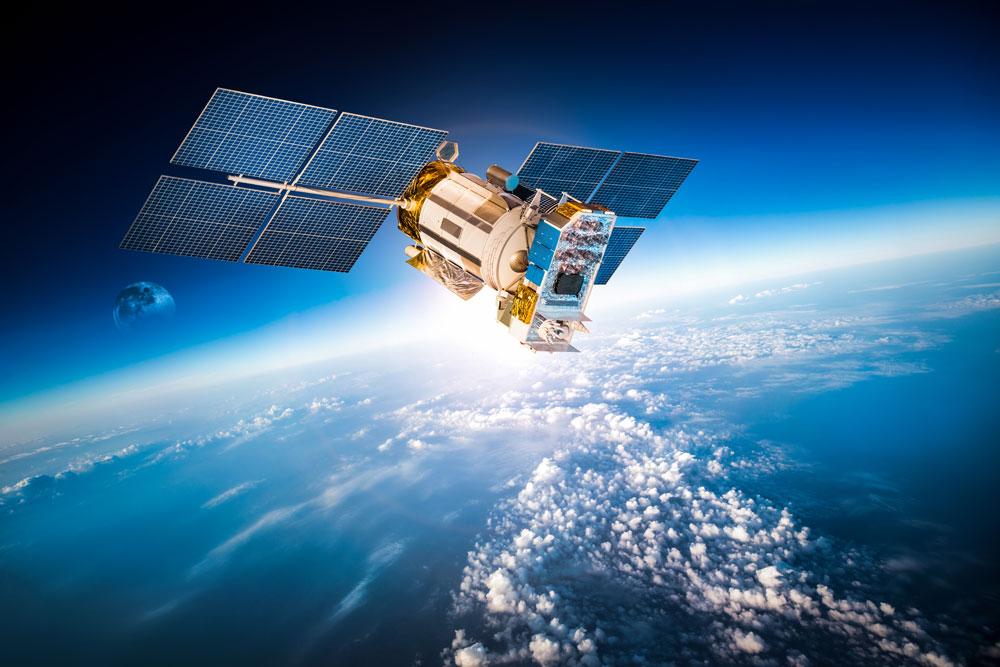The Association of Remotely Piloted Aircraft Systems UK address the use of drones in public services and how they can help the public sector save money and operate more efficiently
There are numerous ways in which drones can be used in the public services sector: police and fire-fighting, disaster response, environmental protection and monitoring and infrastructure inspection to name a few. But why should the public services be using drones? There are three main reasons: they’re safer, faster and cheaper.
At a time when the UK government has been reducing budgets available to public services right across the board, when demands on all services have increased, as well as the ability to scrutinise every payment and every health and safety risk, this technology’s savings are worth potentially hundreds of thousands of pounds to public services that could then be reinvested in other underfunded areas, like education.
Potential savings
In 2017 Severn Trent Water’s drone usage saved £30,000. In 2018, they saved over £750,000 and more is yet to come. They use drones now to check the optimisation of treatment processes, thermal imaging of pipes to detect leakage and creating 3D models of assets. These uses cross into public services: surveying public owned properties for building defects including roofs, windows, chimneys, guttering and high-rise cladding, saving thousands of pounds in unnecessary scaffolding and eliminating the risk of people working at height.
Councils already using drones for inspection work
In the light of the Grenfell disaster, the Department for Communities and Local Government produced Advice Note 13: Advice for building owners: External Wall Insulation (EWI) systems with a render or brick-slip finish, wherein it states that the maintenance of a building with External Wall Insulation (EWI) systems with either a render or brick-slip finish, particularly those over 18m tall or in an exposed location, should include an annual visual inspection. It goes on to list in particular what to look for. UAVs are ideal for this work, as they can gather the information easily, quickly and in a format that can pinpoint any issues. Over the years, this will provide useful data to councils as they monitor building maintenance.
In November 2018, it was reported that a Scottish local authority had saved £4.5 million due to drones. A local drone company was contracted to provide aerial inspection to over 600 council owned properties. This formed part of a larger scale program to bring them into line with HEEP (Home Energy Efficiency Programs) and SHQS (Scottish Housing Quality Standard). By using UAVs rather than traditional methods meant the inspection has taken weeks rather than years. It has also minimised the risks to staff of working at height and the risks of further damage being caused during the inspection process itself.
Working together with the council to get permissions to close roads for short periods, having extra people to hand as observers and helping to make all necessary arrangements meant that the work was straightforward. Other mitigating factors involved flying early in the morning when areas were at their quietest. This has meant that the council inspection program has run smoothly and efficiently with minimal disruption to the local population. The end result of the collaborative work was the targeted deployment of maintenance teams to only those properties in need of work and with an accurate brief as to the scope of the repairs needed.
Environmental protection and monitoring
In Ireland, 18 councils are using drones, predominantly quad-copters to visit known fly-tipping sites. Having the capability to cover 13 or 14 sites in a day, when this would otherwise take several days, and to revisit them at more frequent intervals shows what a difference drones can make to the environment.
While this is not necessarily an immediately obvious use case for drones and one that has had its merits discussed, it does show that councils are not averse to trialling new technology. It has had the added advantage of providing greater security to staff as they are positioned at one remove to the fly-tipping incident and potential conflict. Since 2017, the Department of Communications, Climate Action and Environment has given €2.3 million to councils through the anti-dumping initiative. The funding has supported more than 400 projects and removed more than 5,000 tons of illegally dumped waste.
Fly-tipping monitoring is not the only environmental use that drones can be put to: they can monitor coastal erosion too, enabling better decisions to be made in the long term for infrastructure and tourism reasons. Wattle Range Council in the south east of Southern Australia uses drones to monitor their coastline, overlapping images in time to monitor the erosion. While on-ground monitoring had been undertaken annually for a number of years, the imagery one particular area showed the risk of erosion undermining a key tourist route. From the ground, the dune swales were visibly lower than the dunes, leading people to expect that any breach by the ocean through the dunes would be at this low point. However, the aerial imagery shows that the dune is most likely to undermine the road first, leading to better decisions for local road maintenance being made.
The future for councils?
Leeds University Engineering Department have designed and created drones that can fix potholes in the road. Potentially taking a fraction of the time that traditional methods do, the drone scans the pothole and then uses a 3D asphalt printer to fill the hole. Leeds City Council is working closely with Leeds University to pioneer the use of drones in a concept described as ‘self-repairing cities’. As a side effect, it has been discovered that this 3D printed asphalt is actually stronger than traditional asphalt. With approximately 32 per cent of Welsh councils' road maintenance budgets spent on reactive maintenance last year, there are surely huge savings that could be made. The drones can also fly at night, thereby minimising disruption to traffic too.
Police and fire-fighting
Most police forces in the UK now either have their own drone team or are sharing resources to take advantage of this technology and the feedback has been phenomenal. This technology has proved a game changer on many levels. Wiltshire Police state that: “Drones allow us to pre-position each unit before we deploy from the ground and it is also great for capturing evidence. Drones are a massive game-changer. We can see what’s going on and watch the movement of people. Having footage go straight to the control room in real time is so beneficial. You can’t write this stuff.”
In June 2018, Lincolnshire Police used a drone to obtain a Court Warrant to investigate outbuildings. Thermal imagery from a one minute 20 second film as part of a five minute flight was enough to determine that a known offender was reoffending, growing cannabis at a farm. At £3,000 per hour, a helicopter could have been used but the drone is so well embedded with Lincolnshire Police that it has become simply another tool.
Drones are used now in searching for missing people, not just offenders. The thermal imagery can detect heat in areas hard to reach while a hovering drone can help searchers navigate closer to the missing person. In Wiltshire an 83-year-old woman was believed to be at immediate risk. A large on-the-ground team was sent to search a wooded area near to where she was last seen, while the police drone, equipped with a thermal-imaging camera, was dispatched and arrived at the scene around 30 minutes later.
Within an hour, the drone located a heat source on the edge of a wooded area and on closer inspection, the outline of a person laying on the ground could be seen. The drone hovered over the area directly above to guide officers on the ground in and the patient was located. She had been outside for more than five hours and was suffering with exhaustion and pain as a result of the cold weather.
Back in Lincolnshire, after a crash in which a car overturned, a man was seen wandering away from the crash by a witness, who was concerned about the man in the sub-zero temperatures. The police were notified and a ground search was conducted around a 1.5 mile stretch of the accident location. However, the missing man was nowhere to be found. The challenge was to search a large rural area at night, in the dark, with a small team of officers and only an approximate direction of where the man had headed to. The freezing conditions also posed a serious threat to the missing, injured man. They didn’t find him. Within 70 minutes of the initial phone call notification, the drone plus operator arrived on the scene. 12 minutes later, the thermal imaging found a heat source.
When the officers arrived, they confirmed that it was a male who was injured, unconscious and hypothermic. He was in a six-foot-deep ditch, which made verifying his identity extremely difficult for the officers who were relying on just the human eye. Thanks to the drone technology, the man survived.
The police use drones for many other purposes too: from crowd control and situational awareness of sports matches and festivals, road traffic accidents, evidence gathering and crucially training too.
The fire service use drones too. Just recently they provided imagery from Bacup wildfire. It was far safer using a drone to establish extent of fire before committing firefighters into a very dangerous environment. It is believed that the fire was started deliberately, but with drone footage to show the overall view of the fire, it was resolved faster and more effectively.
They also use drones with thermal imagery to detect heat sources at fires. In one particularly memorable fire at a factory next to a commuter railway route, with a mains gas pipe in situ too, the drone was able to show that the gas pipe was beginning to overheat and could potentially make the situation a far worse one. Resources were diverted to cool the pipe. If this pipe had overheated, the resulting situation would have meant the rail route closing and thousands of Manchester commuters - and their businesses – being affected. The drone’s imagery more than justified its expenditure in just one event.
Drones and disaster response
Drones are used extensively in disaster response. From mapping wildfires and their opposite, flooding, finding those stranded, visual imagery of the disaster and then afterwards assessing damage. Drones, especially those in cages, can go places that may not be safe for people to go. Recently in Mozambique drones were deployed after Cyclone Idai to locate stranded communities and improve the routing of the rescue boats for food supply and evacuation. While that may be an extreme event, the rivers of the UK flood on a regular basis affecting many towns and their populations. The need for data in the immediate hours and days after a disaster is huge: with data from drones, decision makers are provided with better information and better decisions on the use of resources can be made.
Conclusion
The impact drones have had already on the UK economy is large, but nothing compared to what it has the potential to be. PriceWaterhouseCooper predicted that 628,000 people in the UK alone will be involved in the UK drone economy by 2030, contributing up to £42 billion, including savings. If public services want to take advantage of those savings and use them for other crucially needed public services, they need to get involved. Preferably sooner, rather than later.
Crucially, if a council does not want to invest in the drones, training and personnel themselves, keep up to date with the ever-changing regulation and more, they can contract the work out to the drone industry and still achieve savings on traditional methods of surveying.
With thanks to Jim Morris at Drone Surveying Ltd and Gavin Wishart at ASG Ltd for their time and advice.




